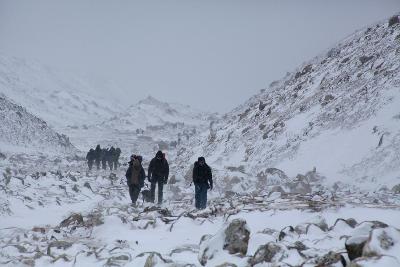KATHMANDU (TIP): Nepal is urging climbers on Mount Everest, the world’s highest peak, to help remove garbage from a camp abandoned two years ago after an earthquake triggered avalanches killing 18 people, as officials prepare to handle a rush of climbers.
Tourism and mountain climbing are the main sources of income for the Himalayan nation and make up 4 percent of its economy. Climbing is recovering from a series of earthquakes in 2015 that killed a total of 9,000 people.
Ten huge canvas bags each capable of holding 80 kg (176 lbs) of trash are to be placed at the ruined site of Camp Two on Mount Everest for climbers to deposit garbage they have retrieved, said Tourism Department official Durga Dutta Dhakal.
“This way we hope to bring down the trash without any extra cost, using helicopters that return empty after dumping climbing ropes at the high camp,” he told Reuters on Wednesday.
The helicopters operate during the climbing season that typically runs from March to May to dump climbing ropes.
Sherpas would be paid to pick up the trash, said veteran climber Russell Brice, a New Zealander who runs the Himalayan Experience guiding company. “We will pay $2 for each kilo of trash the sherpas bring down,” Brice said.
Mountaineers have removed more than 16 tonnes of trash from Everest in the past, but there are no estimates of how much still litters the mountain.
Camp Two, located at 6,400 metres (21,000 feet) above sea level above the treacherous Khumbu Icefall known for crevasses and avalanches, is a major camping site for climbers of Mount Everest and Lhotse, the world’s fourth highest peak.
More than 600 people scaled the 8,850-metre (29,035-foot) Everest summit last year from the Nepali and Chinese sides.
Hiking officials expect the number to swell this season as many mountaineers, whose $11,000 per-person permits received two-year extensions after the quake, are expected to return.
A group of hiking companies that sponsor climbers said it was trying to boost coordination between teams at high camps to avoid long queues of climbers forming in the mountain’s “Death Zone”.
“This will reduce crowding, minimize risks and improve safety,” Dambar Parajuli, chief of the Expedition Operators’ Association, told Reuters. (Reuters)
